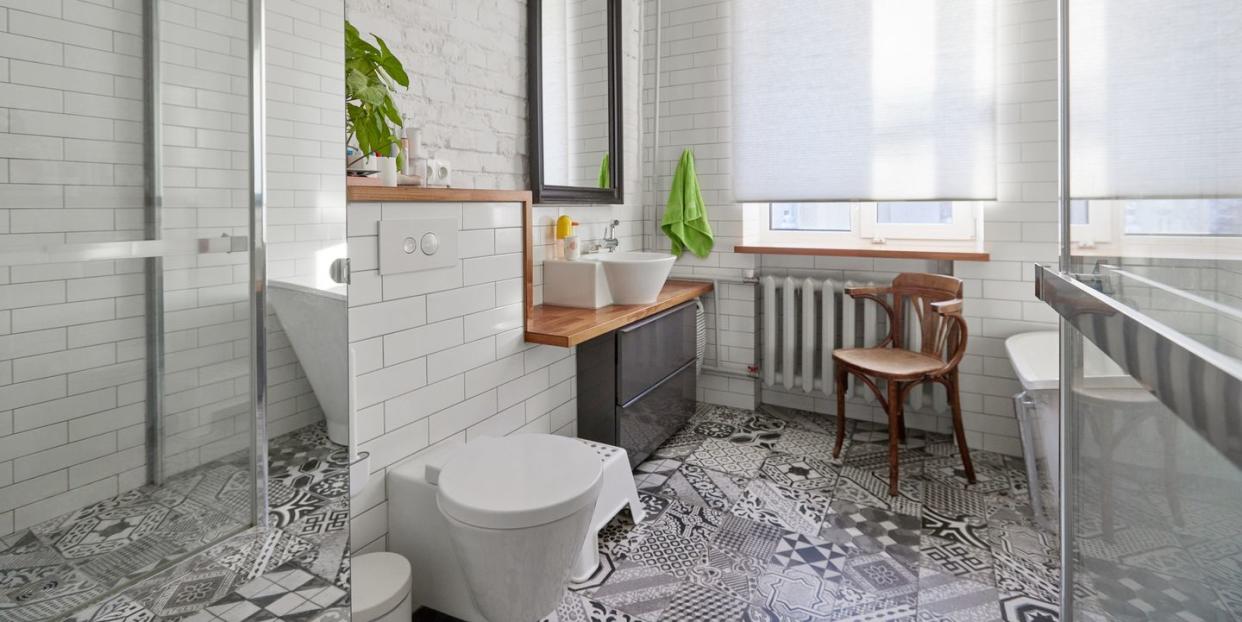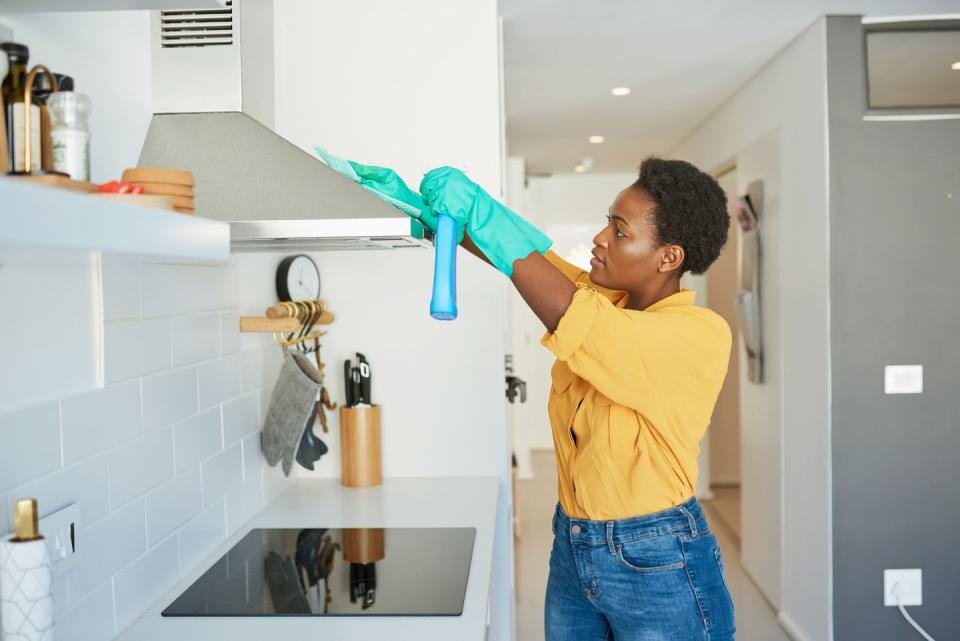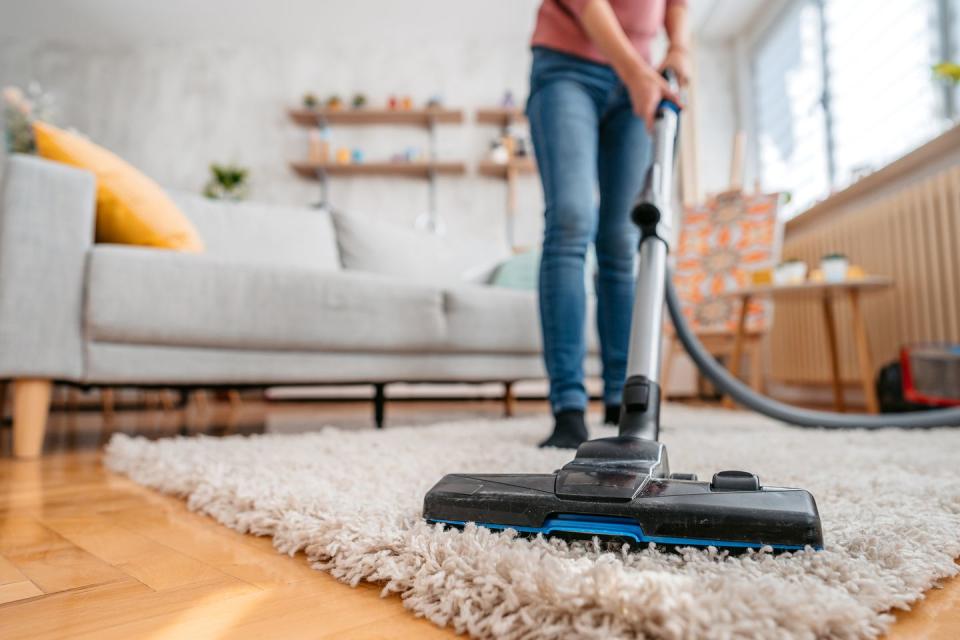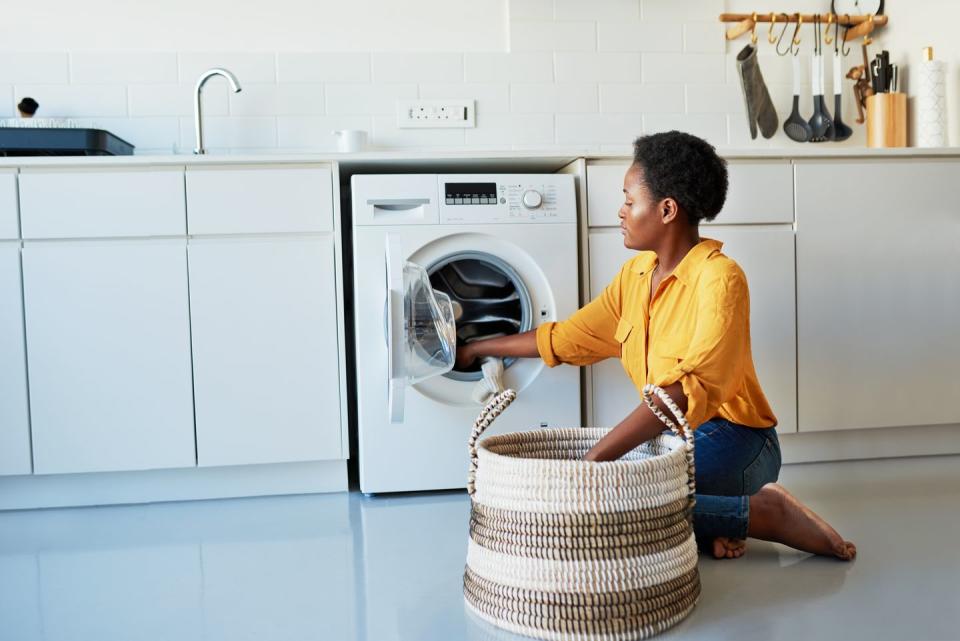How to clean mould and mildew stains

Not only is mould or mildew in your home unpleasant to look at, it can also pollute your air and risk damage to your health. The best thing is to tackle it right away by both removing it and addressing the root of the issue.
Here's what you need to know.
Prevention is better than cure
Mould and mildew thrive in damp, humid conditions where there is inadequate ventilation.
Stop them growing in the first place by keeping the house dry and well aired. This means opening windows and allowing air to circulate - even during the colder months. If certain parts of your home suffer from high levels of condensation or if you dry your washing on a clothes airer in the house, consider buying a dehumidifier.
In bathrooms and kitchens, make sure extractor fans are clean and fully operational so that they expel the moist air as effectively as possible. If mould and mildew do appear, here's how to tackle them.

Showers
To prevent the growth of mould and mildew, leave the shower door or curtain open after showering - this allows the humid air to dissipate. If you need to tackle growth on a shower curtain, scrub it with a bleach solution and rinse thoroughly after as bleach can rot the fabric.
For a greener alternative, soak your shower curtain in a solution of soda crystals, following pack instructions. Dry well before hanging again.
For the rest of the shower, clean the shower tray with all-purpose bathroom cleaner, rinse and wipe dry. Scrub discoloured grout with an old toothbrush dipped in a solution of one part bleach to four parts water or try a specialist mould remover, like HG Mould Spray. For grouting and sealant, use a fungicidal bathroom spray regularly to prevent regrowth. In hard water areas, use a limescale remover once a week.
Carpet
Brush or vacuum away spores and spray with a mould remover suitable for soft furnishings such as Furniture Clinic mould remover (test first in an inconspicuous area). Dab remaining marks with a mild disinfectant until they have been removed, then sponge with cold water to rinse, but avoid over wetting the area.
Alternatively, lightly spray the affected area with a solution of one-part white vinegar to two-parts water, do not over wet the area or the excess moisture could make the mould and mildew problem worse. Lightly blot the solution to remove mould, then rinse with a damp cloth and leave to dry. Sprinkle bicarbonate of soda over the area and leave for 24 hours before vacuuming up. The vinegar should tackle the mould and mildew growth and the bicarb will help remove any lasting odours.
You may be tempted to opt for a full carpet shampoo, but if you already have a problem with excessive moisture, this could make the problem worse. So, in this case make sure the room is very well ventilated or bring in a dehumidifier until the carpet is thoroughly dry.

Washable fabrics
Normal washing should remove light stains when they are fresh. Treat stubborn stains on white fabric (except nylon and items with a 'do not bleach' symbol) by soaking in a solution of chlorine bleach (20ml bleach to 5 litres water).
Treat coloureds and non-bleachable whites with a stain remover such as Stain Devils Fruit and Drink which is formulated to tackle mildew stains, following the manufacturer's instructions.
Walls
To clean blackened walls, use a solution of chlorine bleach and water – one part bleach to four parts water – or a good mould remover such as Astonish Mould and Mildew Blaster.
Try on a hidden area first, as bleach could affect the colour. Scrub with a stiff brush, rinse thoroughly and dry. But be aware that the problem will reoccur until you find the cause of the damp and address it.
GHI Tip: When removing mould and mildew, make sure you keep the area well ventilated and if you suffer from allergies or respiratory problems, it's advisable to wear a mask.

Washing Machines
Residual water as well as soap suds sit in washing machines after each use. And considering the lack of airflow and the warm temperatures, it’s only natural that mould and mildew can grow in this space. Before you know it, black spots form on the rubber seal (particularly under it) and the drum smells musty, passing on the smell onto your clothes. Luckily, mould and mildew are straightforward to deal with in this space.
You can buy dedicated mould and mildew removers, although you need to make sure it suits washing machine seals. An example would be Skylar Life Mold and Mildew Stain Remover. Once removed, it’s good practice to also run a proprietary cleaner through the machine, such as Dr. Beckmann’s Service-it Deep Clean Washing Machine cleaner. This can help remove residual dirt from the internals.
To prevent mould and mildew in your washing machine moving forward, it’s a good idea to leave the door and detergent drawer open when it’s not in use. This helps the appliance vent any remaining moisture. You can also apply diluted bleach to the seal to prevent mould from building up here. Do this every couple of washes to be effective, although don’t run the machine until it’s completely dry, or you could bleach your laundry.
You Might Also Like


